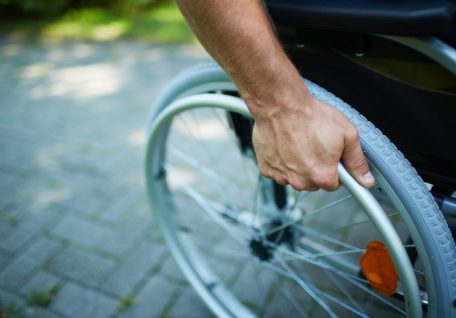Article written by Shelley Lask, AFA Graduate & Ambassador and Owner of Body Positive Health & Fitness
SKILL: Sitting on the floor and rising unaided
The ability to sit on the floor and rise unaided is a significant predictor of mortality in older clients – the more points of contact with the ground required to perform the movement, the higher the risk. This holds true irrespective of gender, age or BMI. (de Brito, Ricardo et al., 2012)
It’s a skill that’s important throughout our clients lives for maintaining independence, and reflects the ratio of muscle power to body weight as well as flexibility, balance, and motor coordination – work on these areas to improve their ability. Including practice sitting and standing from the floor in workouts can help as well – remember to have them practice standing up from various positions eg sitting, lying on side, back, front, pushup position etc.
How to test it: Ask your client to sit on the floor and stand up again, for 5 points on the way down and 5 points on the way up, subtracting one point for each point of contact they use for assistance (hands, knees, legs, arms). Aim to keep increasing their score over time.
When to refer: Refer to a physiotherapist or accredited exercise physiologist if the client is experiencing pain, you suspect a structural issue or injury, or to have rehabilitation exercises prescribed.
SKILL: Single leg balance
Being able to stand on one leg reduces the risk of injury and is extra important for older clients (as it can be a predictor of injurious falls, and tends to decline with age (Springer, Marin et al.(2007)) and clients who run (as running involves spending a fraction of a second of each stride on a single leg before pushing off and landing on the other foot). This skill indicates sound foot, ankle, hip and core stability – work on these things to see improvements – and of course have clients practice the movement itself.
How to test it: Ask your client to stand on one leg for 45 seconds and then repeat on the other leg, with their arms crossed over their chest. When they can complete this test successfully with minimal movement, they can progress to standing on an unstable surface (eg piece of foam), then standing with eyes closed (takes away visual feedback), then standing on one leg while performing a task (throwing a ball, for example), and finally onto dynamic single leg balance exercises (eg single leg squat).
When to refer: If the client can’t hold their balance for 10 seconds and there is no apparent cause, or you suspect that they have balance impairment, refer them to a GP for a general health check. Always stop training and refer to a GP if a client is losing balance because of dizziness. Refer to a physiotherapist or accredited exercise physiologist if you suspect a structural issue or injury, or to have rehabilitation exercises prescribed.
References
Springer, B. A., Marin, R., Cyhan, T., Roberts, H., & Gill, N. W. (2007). Normative values for the unipedal stance test with eyes open and closed.Journal of geriatric physical therapy, 30(1), 8-15. doi: http://geriatrictoolkit.missouri.edu/balance/Normative_Values_for_the_Unipedal_Stance_Test_Springer-JGPT.pdf
de Brito, L.B., Ricardo, D.R., Araújo, D.S., Ramos, P.S., Myers, J., Araújo, C.G. (2012) Ability to Sit and Rise from the Floor as a Predictor of All-Cause Mortality, European Journal of Preventive Cardiology 21: 892-898: doi: http://cpr.sagepub.com/content/21/7/892.full





